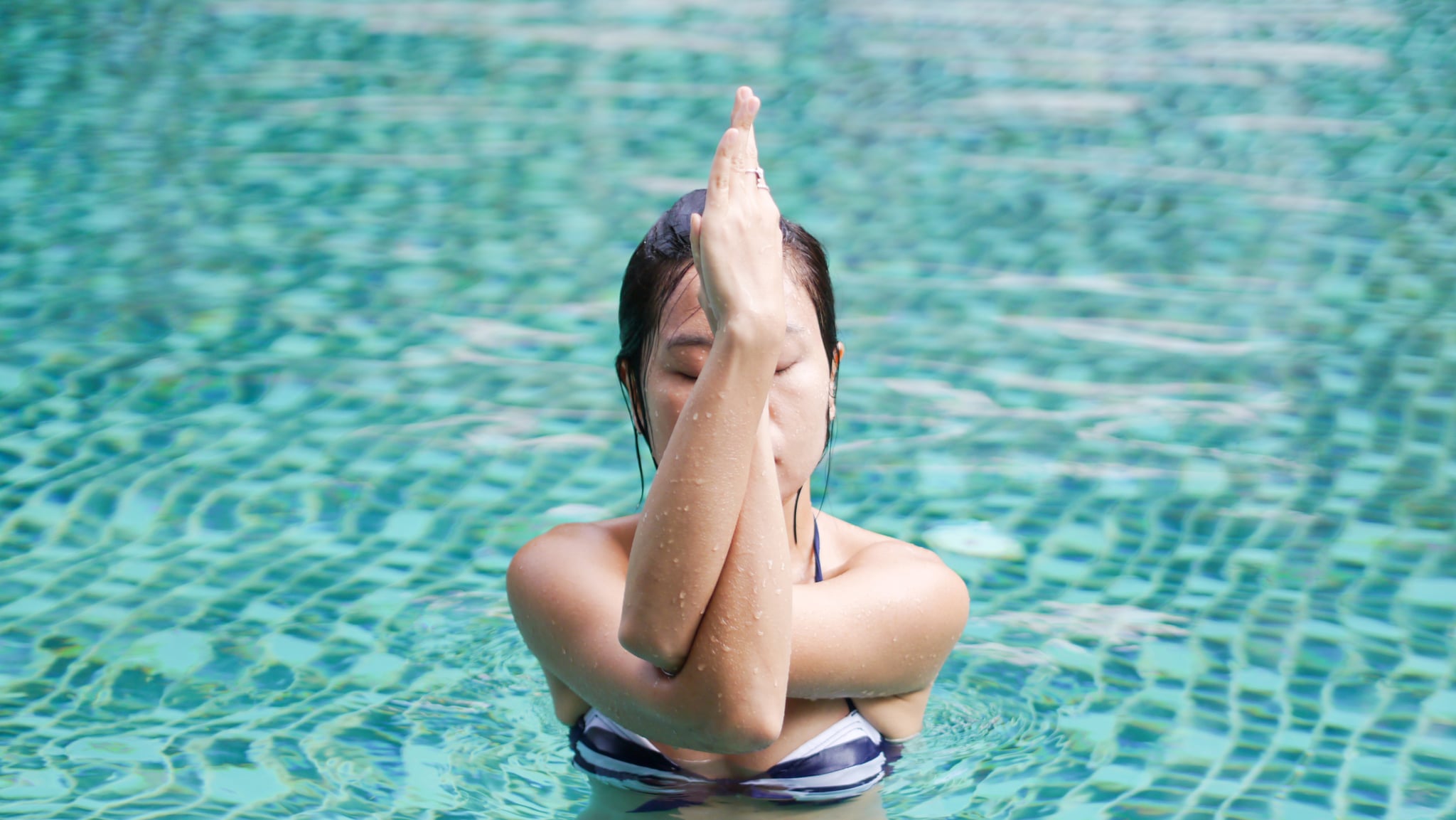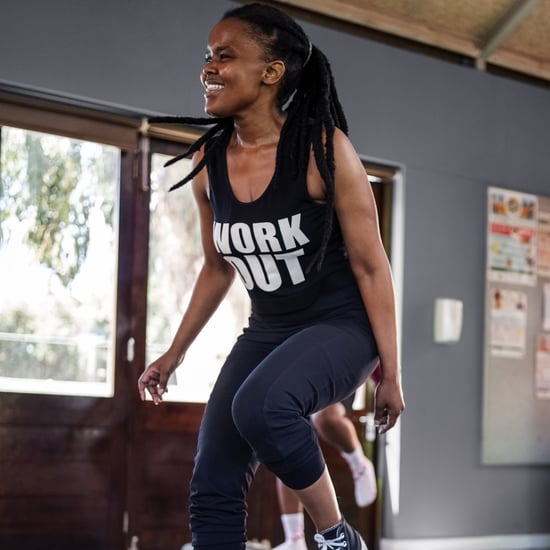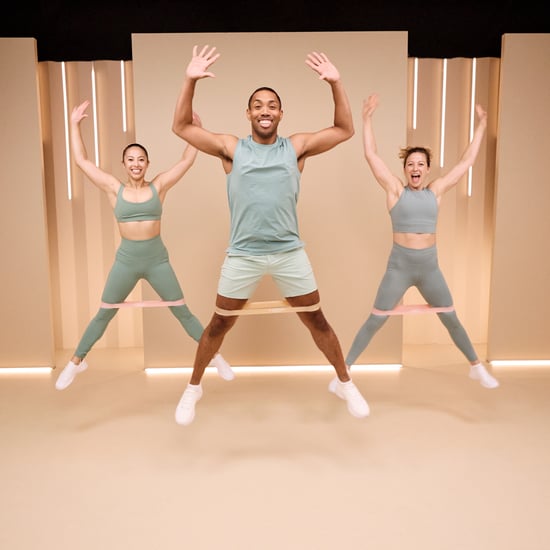The Physical Benefits of Pool Yoga and How to Practice
The Physical Benefits of Pool Yoga Go Far Beyond Cooling Off From the Summer Sun

Yoga doesn't have hard-and-fast rules. The practice is all about making the body feel good — and adding a pool to the equation can do more than just help you cool off in the summer heat.
"Pool yoga harnesses the resistance and buoyancy properties of the water to create a non-impact, total-body workout, that ups your calorie burn, increases muscle tone and flexibility, and improves your circulation. It also reduces inflammation, muscle and joint pain, and post-workout soreness," certified yoga instructor and the creator of H2yOga Sue Gisser says.
The natural resistance created in a pool not only massages your muscles but also helps you tone. That's why submerging your practice in water can calm the nervous system and promotes rest, healing, and restoration, Gisser adds.
Take achy joints, for example — pool yoga is a great way to relieve some pain.
Depending on how deep you go, Gisser says that the water can absorb up to 80 percent of your weight, which can encourage your muscles to relax and take some pressure off of your joints. With more control over your movements, you can work out longer and harder than on land.
"If you have access to a pool, get in, and start playing. Your body is always your best teacher. Start in any yoga pose – your body will tell you where it wants to move next, what needs to be stretched, what feels good, what doesn't, when [and] how to adjust to keep you from falling," Gisser says.
You have the freedom to design your own pool flow, and Gisser is sharing tips to help you get started.
"About chest level is deep enough to give support and adequate resistance for most standing poses, flows, and balances. But if you're using buoyancy devices to do a floating yoga practice, you can practice in deep water, too." Gisser says.
Say you want to flow from Warrior II pose to Triangle Pose — Gisser notes that as you transition back and forth, inhale during pose one and exhale through pose two. Then, switch the breath for the next two minutes (exhale in Warrior II), allowing your body and the water to guide your pace. These poses can be done any way that's easiest for you, so you can do them floating and modify them so your face isn't underwater — which is essential during your inhale portion of a pose.
When you float, circular motions make you spin around — Gisser wants you to embrace the movement. Here, you're creating a whirlpool propelled by your core and the water.
Obviously, poses such as Downward Facing Dog need to be modified. For this move, Gisser suggests two solutions: flip it upside down by practicing Boat pose instead, or turn it on its side by performing a straight-legged Side Crow.
"Have fun, experiment, trust yourself — if it feels good, you're doing it right," Gisser says. But she always suggests wearing sunscreen, keeping hydrated, not eating right before a flow, and not swimming alone.
When asked if there are any downsides to pool yoga, Gisser stated: "You feel so good, and so free, and have so much fun doing it, you never want to stop. If you have other things to do, I guess that could count as a disadvantage."
Click here for more health and wellness stories, tips, and news.






